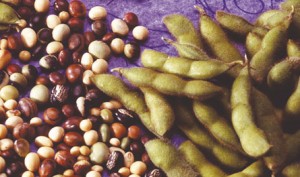New source for healthy fats
Scientists found a way to produce fish oil without harming a single fish
When it comes to nutrition, you probably know that raw fruits and veggies are good for you — which is why someone probably encourages you to eat them every day. You probably also know about eating whole grains and lean meats and limiting your intake of sweets and grease.

Experts say we’re not getting enough omega-3s. “The American diet, as typically consumed, is low in omega-3 fatty acids,” said Eileen Kennedy at a recent meeting of biologists in Washington, D.C. Kennedy is the dean of the Friedman School of Nutrition Science and Policy at Tufts University in Boston.
Fish oil is rich in omega-3 fats, which is why nutritionists and government organizations recommend people eat fish or take fish oil. But eating fish can be tricky business. Some people don’t like the fishy taste. Many types of fish and seafood contain high levels of a poisonous soft metal called mercury. And many of the types of fish that people like to eat are disappearing from the world’s oceans because of overfishing. (See Science News for Kids story “Big fish in troubled waters.”)
“As the availability of fish decreases, we’ve got to think of other sources for omega-3 fatty acids,” Richard Deckelbaum told the audience at the same meeting. Deckelbaum is director of Columbia University’s Institute of Human Nutrition in New York City.

Soybeans can be grown with SDA because of a process called genetic modification. Inside every cell of every living creature are genes, which contain all the information needed to build and maintain life. Scientists have discovered ways to change, or modify, these genes in ways that change the organism. For example, plants can be genetically modified so they don’t produce seeds or so their flowers bloom in a certain color. Corn can be genetically modified to control the number and color of kernels that grow in each row.
Scientists at Monsanto, a large agricultural company, changed two genes inside the soybean. These modified genes directed the plant’s cells to make certain kinds of chemicals called enzymes. As a result, the genetically modified soybean plants contained SDA — just like fish.
Monsanto would like to start making soybean oil with omega-3s. Soybean oil, though you may not know it by name, is very popular: Most vegetable oil is soybean oil. (Which means, perhaps, that one day junk food like french fries may even provide some omega-3s.) However, the company cannot grow the modified soybean plants until it gets approval from the U.S. Food and Drug Administration.
The process isn’t perfect: People will have to eat a lot of genetically modified soy to get the same benefits as they would from fish. Plus, many people worry that eating genetically modified foods could bring unexpected health risks.
With the global decline of fish and our need for omega-3s, science is looking to soybeans for a solution. “I hope it’s on the market soon,” Kennedy said.







